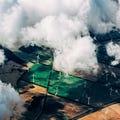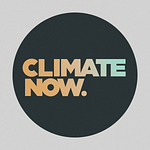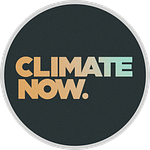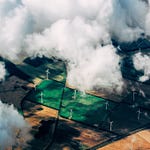Episode Summary
On today’s Climate News Weekly episode, James Lawler is joined by Julio Friedmann. They pay tribute to Saleemul Huq, leading climate action advocate from Bangladesh who passed away on October 28, discuss issues facing the Panama Canal and how they impacts global trade, and have a conversation about two offshore wind stories: Ørsted’s announcement that it is abandoning its New Jersey project and the Biden administration approval of the largest offshore wind project off the coast of Virginia.
Transcript
James Lawler: [00:00:00] Welcome to Climate News Weekly. I’m here with Julio Friedmann. Julio, good to see you again.
Julio Friedmann: Glad to be back.
James Lawler: So we want to start today with a sad story, unfortunately.
Julio Friedmann: Yeah, we lost a giant. Dr. Saleemul Huq, a Bangladeshi scientist, was an incredible towering figure. Not only has there been a series of news stories on it, his obituary is actually on the IPCC website, which is an unusual thing, and the Bloomberg podcast Zero did a whole episode on him featuring an interview with him a year ago.
Dr. Huq was an incredible figure, and one of the things he championed so strongly was the need to focus on adaptation to climate change as well as mitigation, and he focused profoundly on the need for loss and damages and money going to the developing world due to the impending suffering of climate [00:01:00] change. And he talked about the fact that climate change has arrived and that the damages are real and that we need to put money together and he saw his vision come to fruition in COP 27.
He attended every single COP since its inception, so 27 out of 27. And in the final one, he saw money coming into adaptation and he saw the creation of the Loss and Damage Fund. These were things he’d been campaigning for for 30 years. So, the world owes him a debt of gratitude for his devotion, his energy, his joy in tackling this extremely difficult set of challenges, and delivering.
James Lawler: Related to the theme of adaptation is a story that we saw this week in Bloomberg on Panama Canal traffic being throttled by climate change impact. And so the story calls out that the vessel quota will snarl trade as carriers are forced to divert to Suez Canal. Panama’s Gatun Lake is at its shallowest since at least 1950.
Julio Friedmann: [00:02:00] Yes, this is being attributed to drought in the Panamanian region, at least in part, and because of this profound drought, Panama Canal ain’t working as usual. They’ve had to restrict traffic. When people think about climate adaptation, they often think about heat waves and sea level rise, but in fact, climate change affects everything, and this is an example.
Well, suddenly it’s like, oh, Panama Canal isn’t open for business the way it normally is, that will restrict global trade, that will have knock on costs of all kinds. And it is the sort of thing we’re beginning to see more of; that climate change impacts are manifesting in ways that affect human beings and affect the global economy in fully unanticipated ways, but with substantial concerns and risks.
James Lawler: Yeah, it really is quite remarkable how dry it is and how much the water, how much lower the water is this year. The chart is quite striking. It’s also very interesting that this problem and the effects it will have [00:03:00] on trade are not limited to, you know, the Panama Canal. The article references the Rhine and the Danube rivers, which were, and I’ll quote, evaporating at such a rate that trade valued at about 80 billion annually was disrupted, affecting oil refining, power generation, and corn farming.
Julio Friedmann: Right, and people had anticipated things like the reduction in hydropower, which we are seeing, and that that is a consequence of climate change and we have to adapt to having less hydropower. People hadn’t quite understood that the Rhine would dry up and you couldn’t use it and that’s been happening for a few years actually.
James Lawler: What’s so fascinating is just to think about the compounding effects of all of these things, right? Like as they all get worse, stuff that we never sort of thought to include in the same sort of category of risk are all sort of compounding.
Julio Friedmann: Yeah. And one of the things that the United States Department of Defense has been talking about for many years is that these kinds of consequences affect military readiness. They affect base infrastructure, operating costs, like all of these things, like have [00:04:00] real geopolitical security consequences, as well as trade consequences, as well as human health consequences.
James Lawler: Yeah. So this is a good segue to our next story, which is a warning from climate scientist James Hansen on the speed of global warming. Tell us about this, Julio.
Julio Friedmann: So James Hansen is a legendary figure, rightly so, in climate circles. He was one of the first real alarmists around climate, and he did that during the Bush administration. This is George W. H. Bush, so this was back in 1990, a long time ago. What he’s basically said is two things. One of them is that the rate of climate change seems to be accelerating and the other is that we will probably exceed the UN target of 1.5 degrees postindustrial warming this decade, that by 2030 we should hit that.
This comes as a follow on to other [00:05:00] news stories this week about the carbon budget and in fact a paper in Nature Climate Communications discusses this and reaches the same conclusion that it is going to be very hard for us to avoid blowing through the carbon budget for a one-and-a-half-degree world this decade.
James Lawler: I think what’s different about what Hanson is saying and what has been understood so far by many is the sensitivity of the earth to the impacts of CO2 accumulation in the atmosphere is much greater than the best estimates that have been laid out by the IPCC or proven to be such so far, at least.
Julio Friedmann: Yeah, the climate sensitivity is, is something that has vexed all the climate scientists for a long time. Like, what is it really? And what are the nature of the feedbacks and impacts? Like it’s, it’s devilishly hard to sort this stuff out and there still remains a lot of uncertainty.
But it seems to be that our climate models have under predicted the rate of change and [00:06:00] impact. And Hansen has spent a lot of time looking at sort of these short term feedbacks and how they affect the climate cycle and his current warning is basically saying, hey, the climate sensitivity is greater than we thought, that the thresholds are lower, that the feedbacks are stronger, and as a consequence, we should be much more proactive than we are. And this is one of these things where reasonable people can disagree, but a scientist of Hansen’s eminence requires attention.
James Lawler: Yeah.
Julio Friedmann: And he’s backed by data. He’s backed by information. There’s a lot that shows and suggests that he is correct.
James Lawler: There’s a couple things. I think one is that over the last decade, the difference between the heat that is, uh, reflected from the sun back into space from the earth and the heat that is absorbed has doubled.
So twice as much heat is being captured now as it was 10 years ago, which is really quite extraordinary. You think about how [00:07:00] much heat we receive from the sun, how much energy we receive from the sun. So in terms of what to do about it, he sees sort of two interventions as being the only option.
One of those is a carbon tax that will force a faster movement away from fossil fuels and the second is solar geoengineering, which is spraying sulfur particles into the upper atmosphere to reflect more of the sun’s energy, which is a highly controversial topic. And in fact, we’ll be releasing a big debate on the topic tomorrow. So if you’re interested in this topic of solar radiation management and geoengineering in general, this will be a good debate to tune into.
So a big story, and this is one that we’ve talked about before, but there’s several new developments in this larger saga, which is U. S. offshore wind. Orsted has pulled out of a billion-dollar New Jersey offshore wind project. And, Julio, can you share sort of the big picture on what’s going on with offshore wind in the [00:08:00] U.S. right now? Like, what is happening? What do all these stories add up to?
Julio Friedmann: Right. So, as much as people like to demonize companies, like companies are the, what builds the clean energy infrastructure of the world, including a company like Orsted.
James Lawler: Yeah.
Julio Friedmann: And people want them to build these offshore wind farms and they made bids and they made plans. And then, we had things like inflation. We had things like supply chain limits and the cost of those projects went up and they went up quite a bit. So, Orsted went back to the state of New Jersey and the state of New York and said, hey, this is going to cost us more can we please have additional rate recovery? And the state said, no, you can’t, because we don’t want the power costs to go up that much at which point, Orsted said, well, then we can’t build the project.
This is getting played out in many other arenas, but it is most obvious and impressive on [00:09:00] the offshore wind for two reasons. One, these are really big projects, billions and billions of dollars. They’re hard, and when a project collapses, it affects the share price of these companies. Orsted took a beating this week.
Another thing that it means is, you know, New Jersey and New York are betting on offshore wind for a lot of their climate commitments. If those offshore wind projects don’t get made, then in fact, New York and New Jersey won’t hit their climate targets. And again, we are heading into the global stock take at COP 28, a lot of countries, a lot of nations, a lot of regions, a lot of states, a lot of companies are going to be saying, oh, I guess we might not hit our climate targets.
And it’s because of things like this. It’s not because they lack ambition. It’s because it’s harder than they thought and it costs money and you have to build offshore infrastructure and all these things, and it’s just hard to do. There’s no part of the energy transition that is cheap or easy.
James Lawler: [00:10:00] So continuing with one more headline in the wind story, the Biden Harris administration has approved the largest offshore wind project in the nation off the coast of Virginia. So this is at least a counterpoint to some of the sad or stead news. Julio, any thoughts on this one?
Julio Friedmann: Yeah. So this is the kind of push me pull you we’re going to see. One project dies and it’s catastrophic and then another project goes forward, and it may not work in New York, but it might work in Virginia.
It might be the case that we get these huge grants from the federal government to pay for the offshore infrastructure that will help enable future things. It is easy to draw a simple conclusion from a simple story but fundamentally, this is a super complex world. And I am always pleased to see these kinds of announcements in news, when there’s a success on permitting, when there’s a success on infrastructure build out, because that doesn’t get the kind of coverage that a failure gets.
James Lawler: Right.
Julio Friedmann: And in fact, I am constantly seeing positive stuff. I’m constantly seeing new technologies, new projects, new developments, [00:11:00] global agreements, trade deals. I’m seeing that stuff all the time and when I read a story like this one about the approval of the Virginia offshore wind farm, that makes me pleased because we need a whole lot more of that.
James Lawler: Yeah, and this is a very big one. Just to give you perspective, this is 176 wind turbine generators. So 176 installations, each with a capacity of about 15 megawatts, it’s going to produce about 2.6 gigawatts of clean energy and about a thousand jobs, permanent jobs, and power close to a million homes in the region.
Julio Friedmann: It’s a big one.
James Lawler: Thank you so much, Julio, for making time for this.
Julio Friedmann: Always a pleasure.
James Lawler: That’s it for this week’s episode of Climate News Weekly. We hope you’ll join us next week.
Climate Now is made possible in part by our science partners like the Livermore Lab Foundation. The Livermore Lab Foundation supports climate research and carbon cleanup initiatives at the Lawrence Livermore [00:12:00] National Lab, which is a Department of Energy applied science and research facility. More information on the Foundation’s climate work can be found at livermorelabfoundation.org.











Climate News Weekly: Remembering Saleemul Huq, Panama Canal Troubles, US Offshore Wind Power Saga Continues